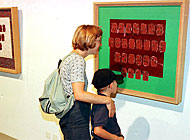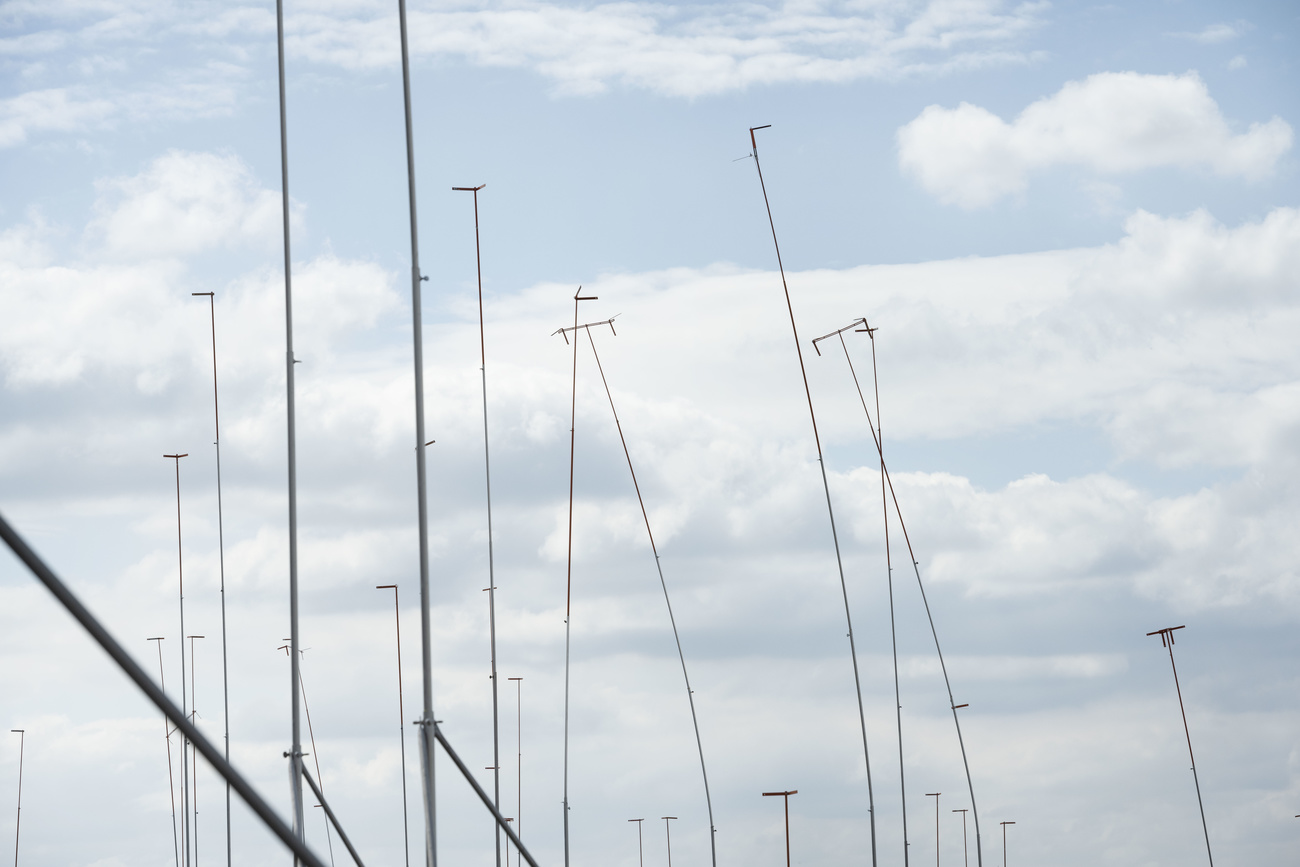Artistic touch for the blind at Forum of Swiss History

An art exhibition, created specially for the blind, has opened in the central Swiss town of Schwyz. Sighted people are welcome to visit the show, but they can't get the feel of it in quite the same way as the blind visitors.
Tucked into an old corn loft in the medieval square of the central Swiss town of Schwyz is the Forum of Swiss History’s groundbreaking “Sightseeing” exhibition.
On entering the cavernous interior, the visitor is greeted by a sign that reads: “if you can read this then don’t touch the pictures”.
And so the blind visitors stroll through the show, running their fingertips over the exhibits, while we sighted visitors have to keep our hands to ourselves.
“It must be so frustrating not to be able to touch the exhibits, so I thought we’d make our exhibition accessible to blind people by allowing them to touch the installations,” Stefan Ashwanden, director of the museum, told swissinfo.
On display are 30 works by Scottish artist Tim Sharp, who now lives in Austria. The paintings were specially done for the exhibition to give blind people an idea of the different styles of modern art.
The works are covered in raised buttons, in Braille script. “Tim Sharp has developed works for this exhibition in a variety of modern styles,” says Ashwanden. “Through touch blind visitors can find out something about these different styles of post-war modern art”.
The idea is that sighted visitors, who are not allowed to touch the exhibits, speak to the blind visitors, and by communicating their individual perceptions of the exhibits, get a better understanding of the works.
Also on show are works by the blind Slovakian photographer, Evgan Bavkar. Now in his 50s, he lost his sight when he was 11-years-old, but still takes photographs.
The idea of a blind photographer seems something of a contradiction, but Bavkar overcame his difficulties by working with his niece. She takes him to certain locations and, under his direction, fills the scene with objects he has chosen from memory or imagined.
The Sightseeing exhibition is not without its critics. Erica Steiner, who has been blind since birth, enjoyed the tactile nature of Tim Sharp’s exhibits, she was not so keen on the work of Evgan Bavkar.
“I cannot understand why a blind person would take photographs. Why should I take pictures that I finally cannot see?” she told swissinfo.
The exhibition also contains a variety of objects, which help visitors understand the lives of blind people in Switzerland over the past 600 years.
Items range from simple walking sticks to Braille compasses to plastic clips used to keep socks of the same colour together.
Sightseeing is also drawing in large crowds of schoolchildren, who take part in workshops designed to help them better understand the lives of those who cannot see.
Ritalisa Steiner, one of the teachers at the museum, told swissinfo, “The kids love it, and they are fascinated by the exhibition.
“It’s fantastic that in order to truly understand the works of Tim Sharp one needs to exchange ideas with someone who can’t see. Blind people have a very different perspective.”
Sightseeing runs until September 17.
by Tom O’Brien

In compliance with the JTI standards
More: SWI swissinfo.ch certified by the Journalism Trust Initiative








You can find an overview of ongoing debates with our journalists here . Please join us!
If you want to start a conversation about a topic raised in this article or want to report factual errors, email us at english@swissinfo.ch.